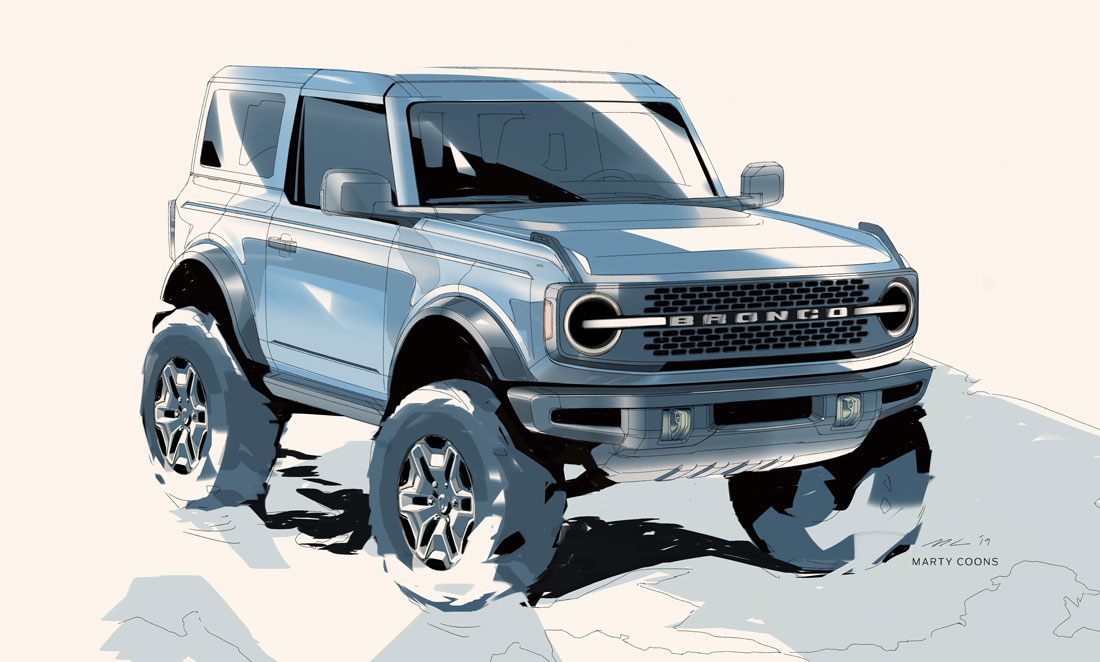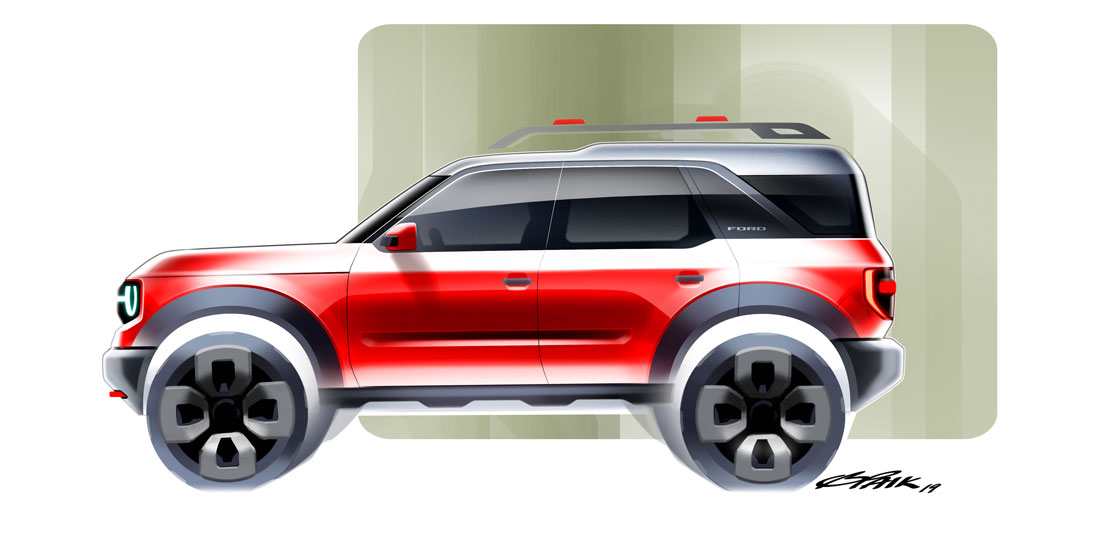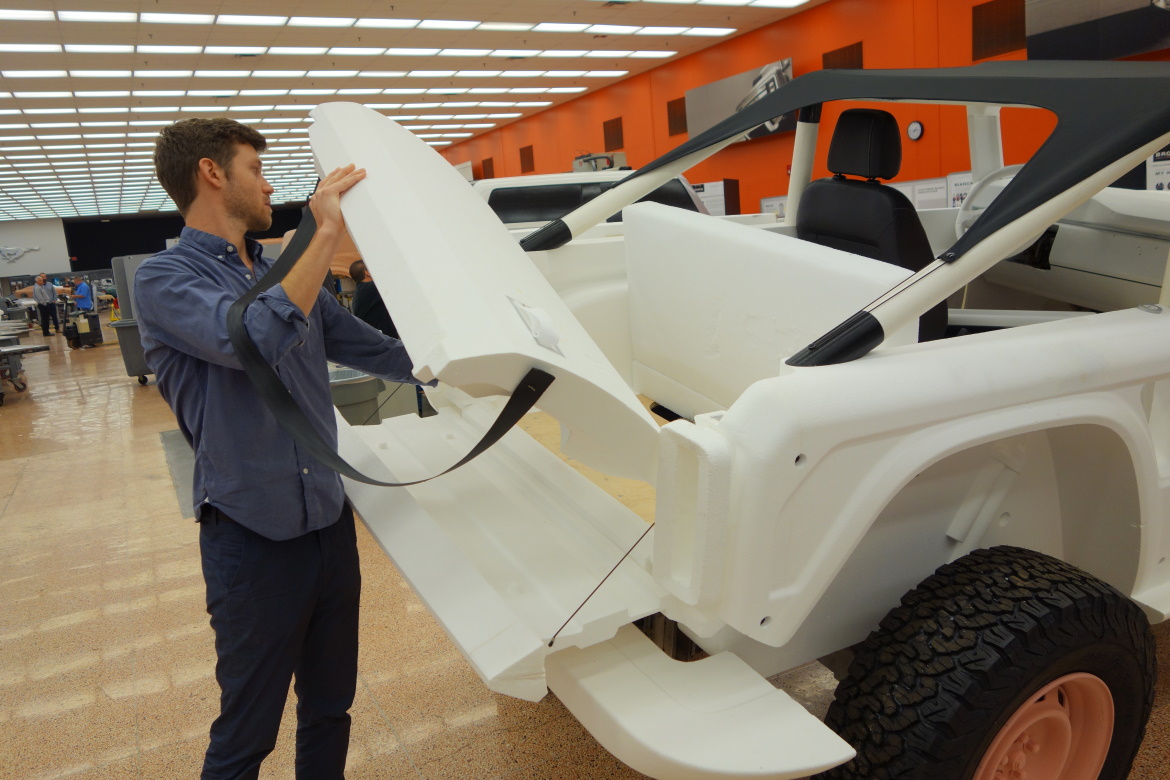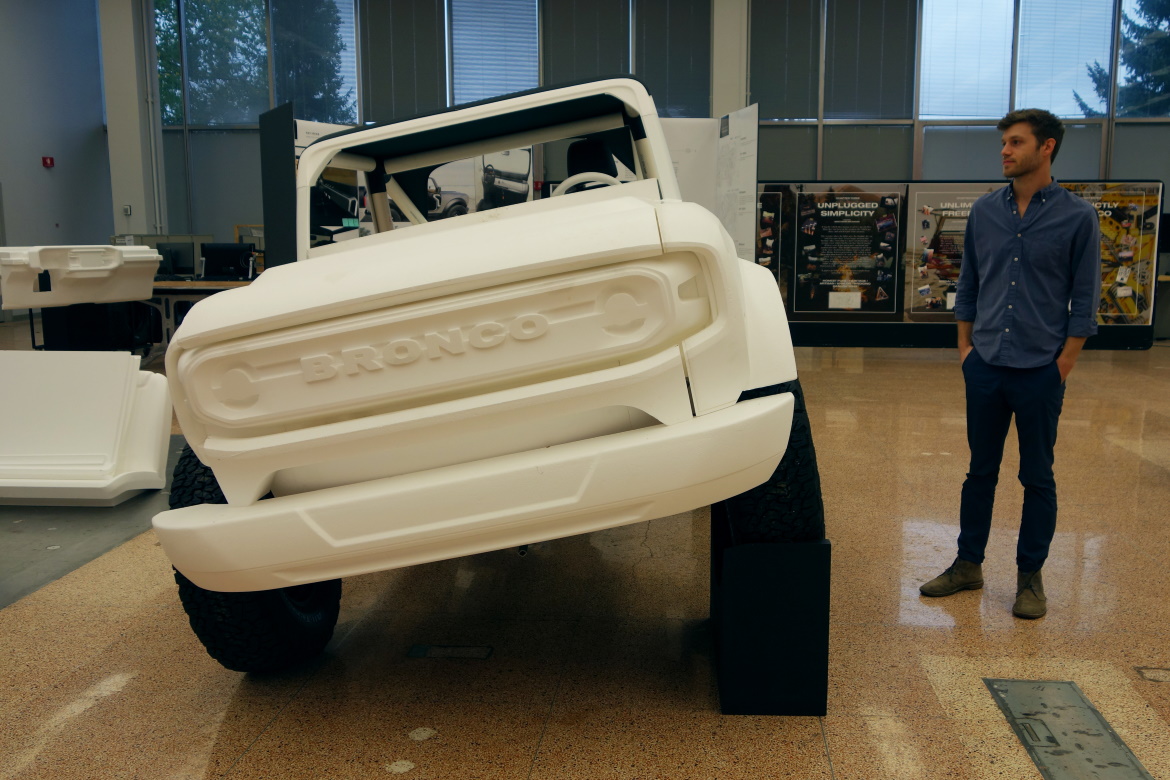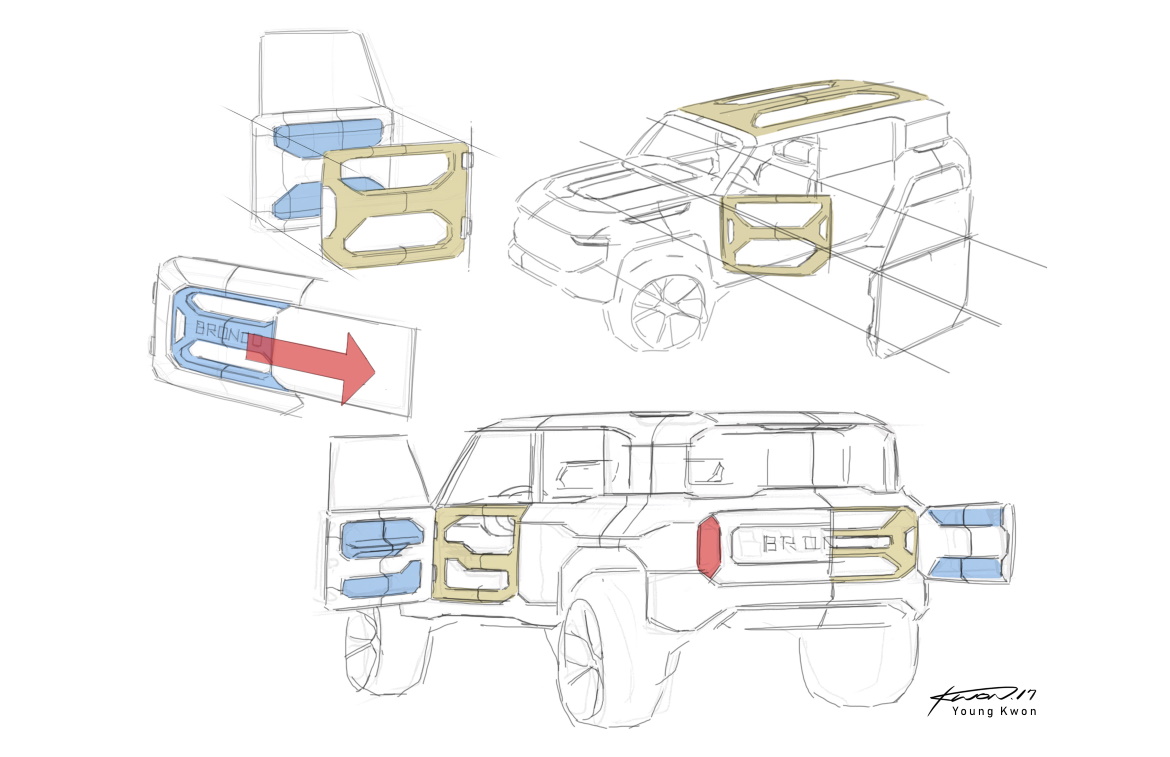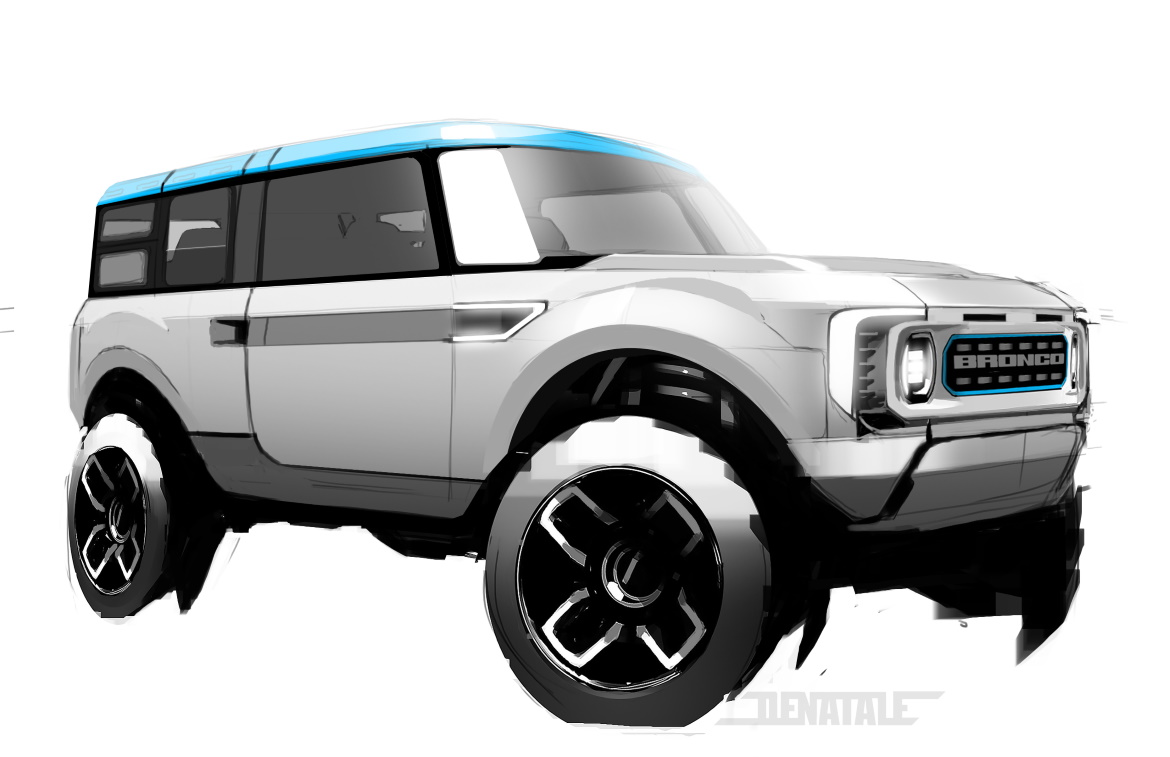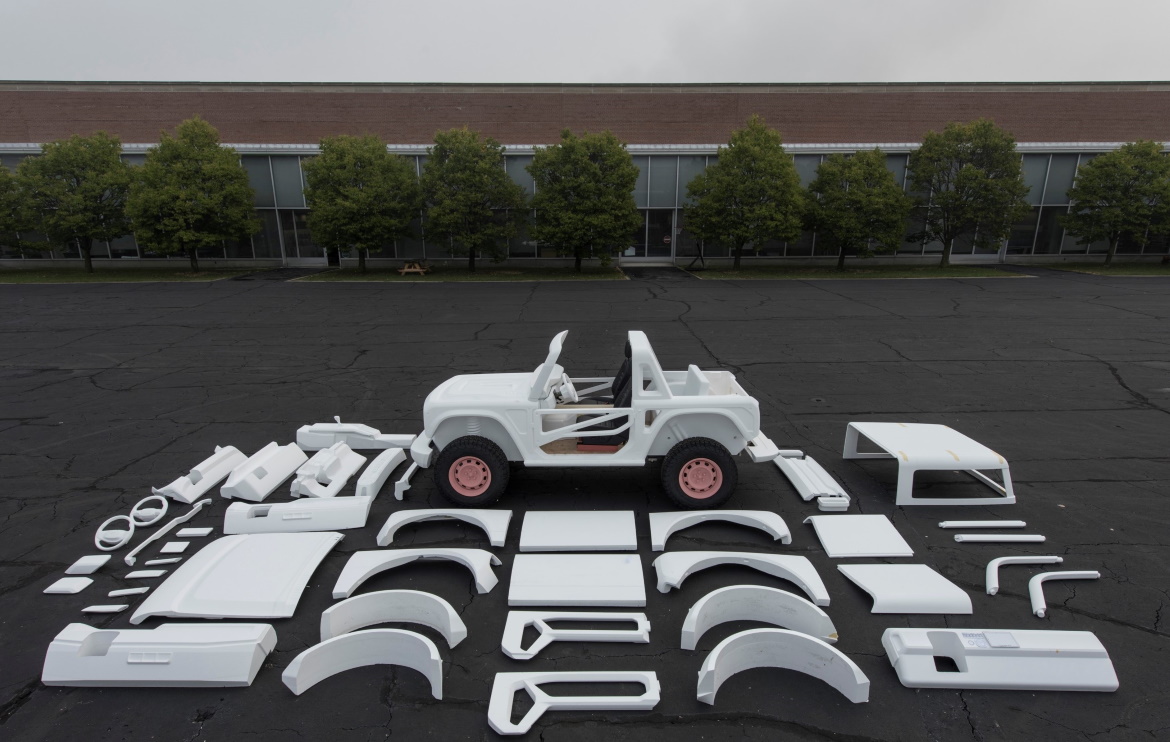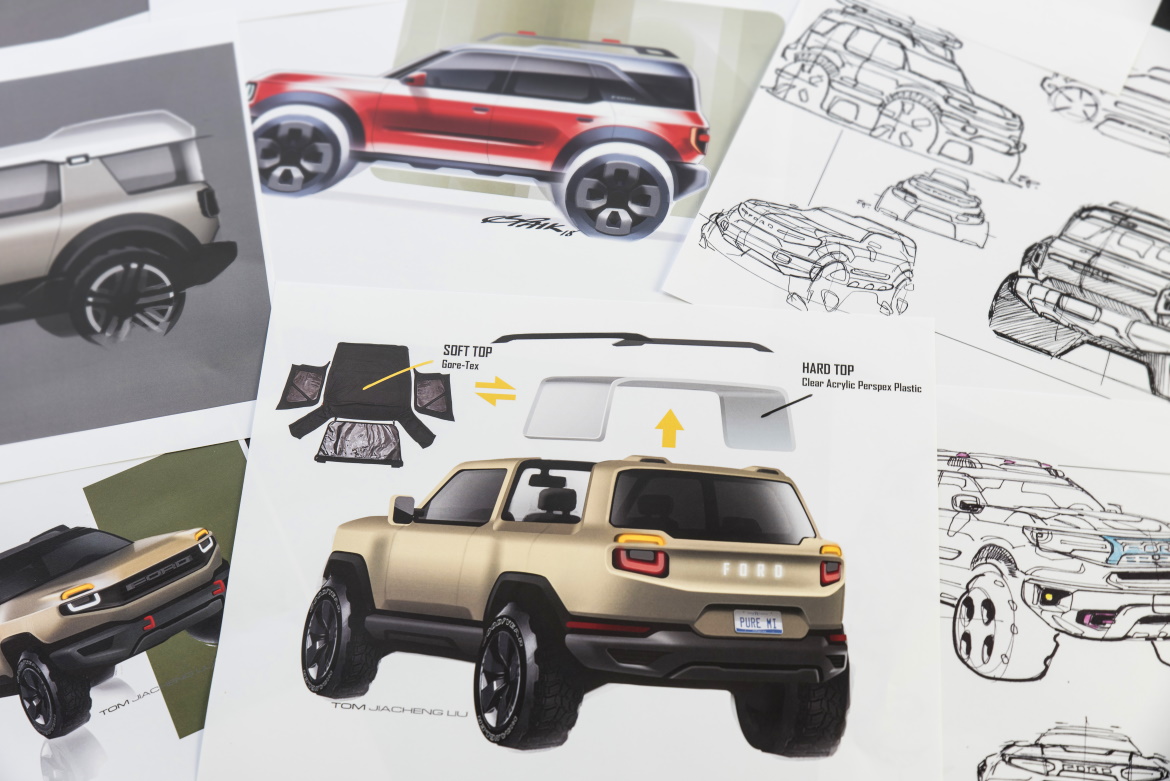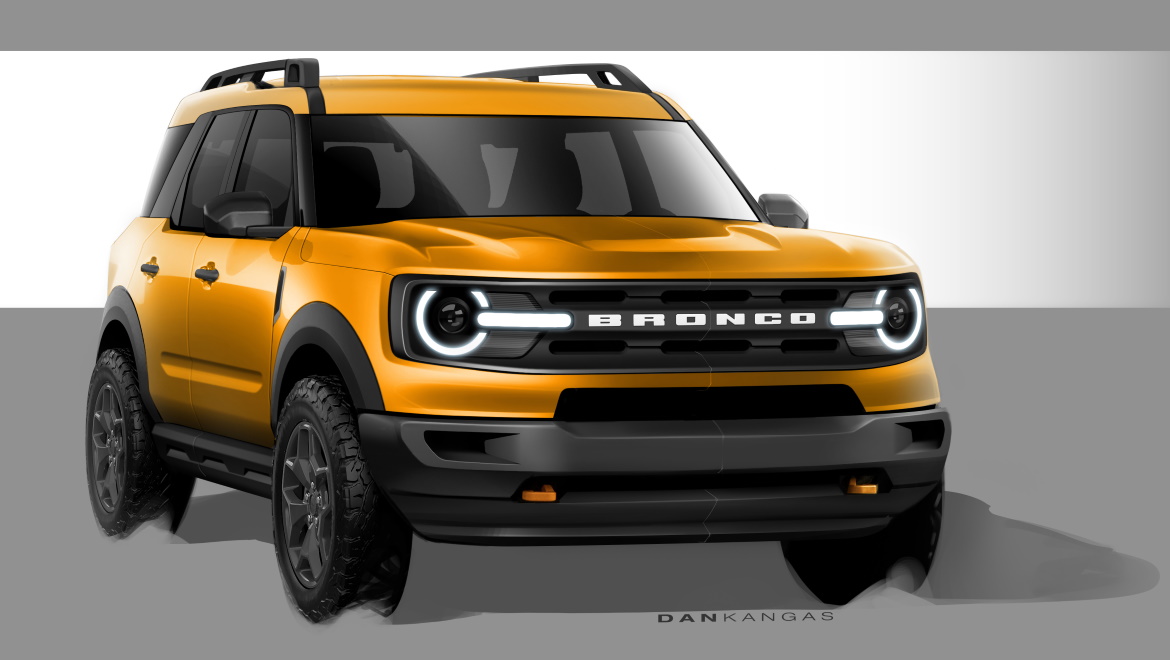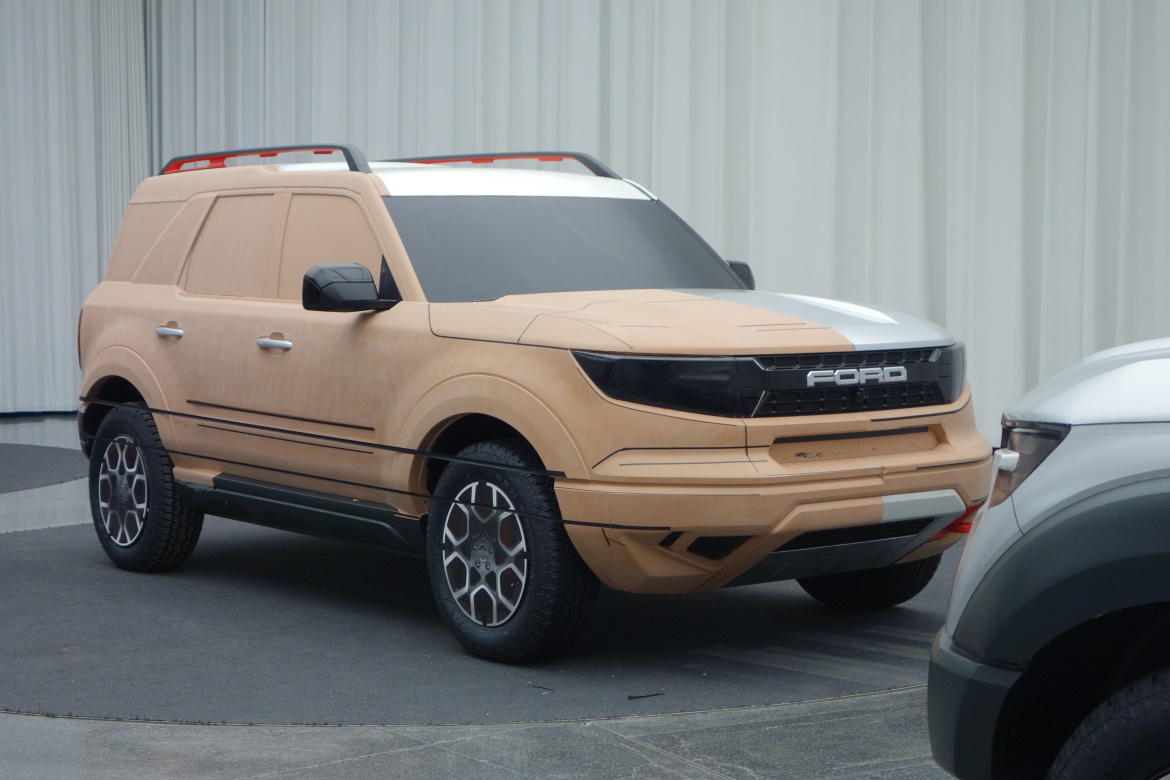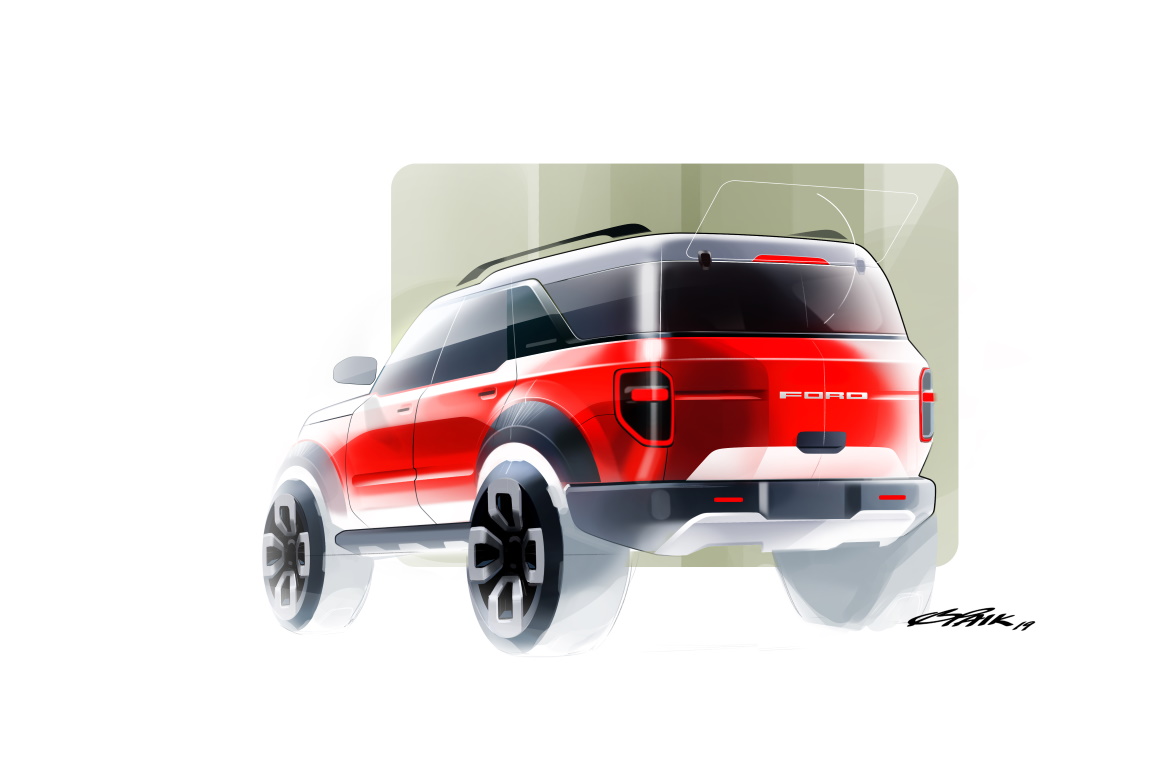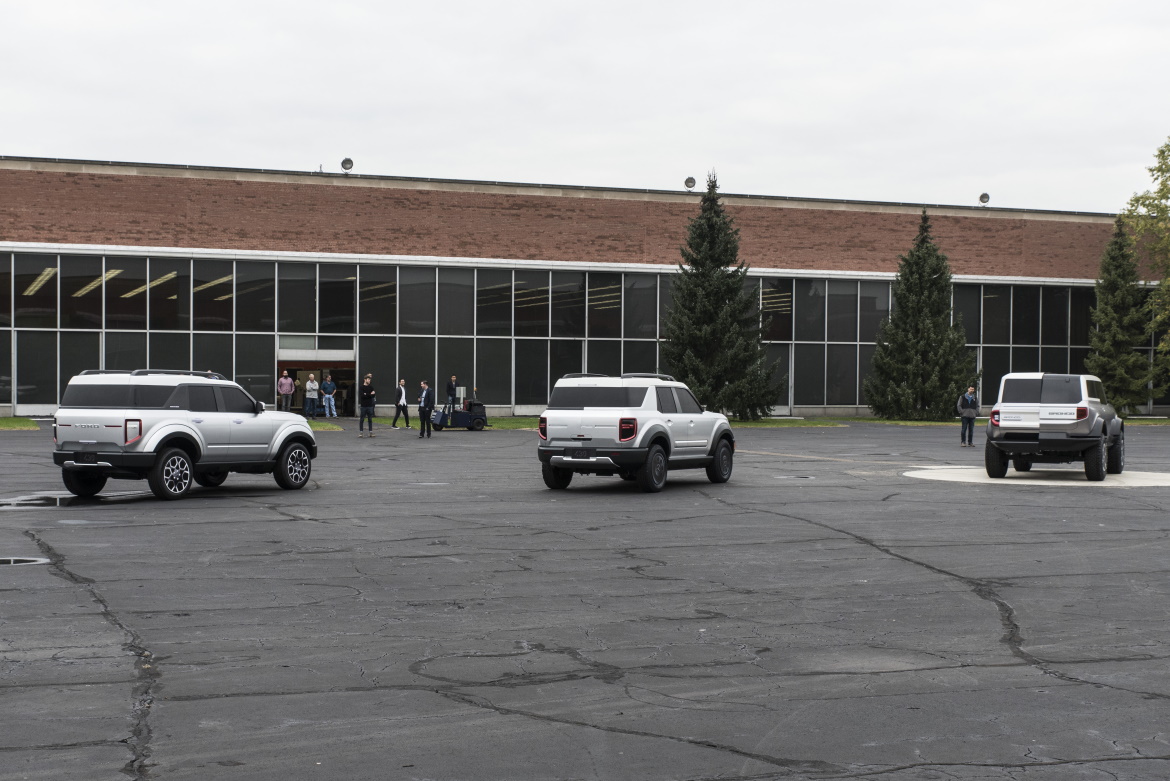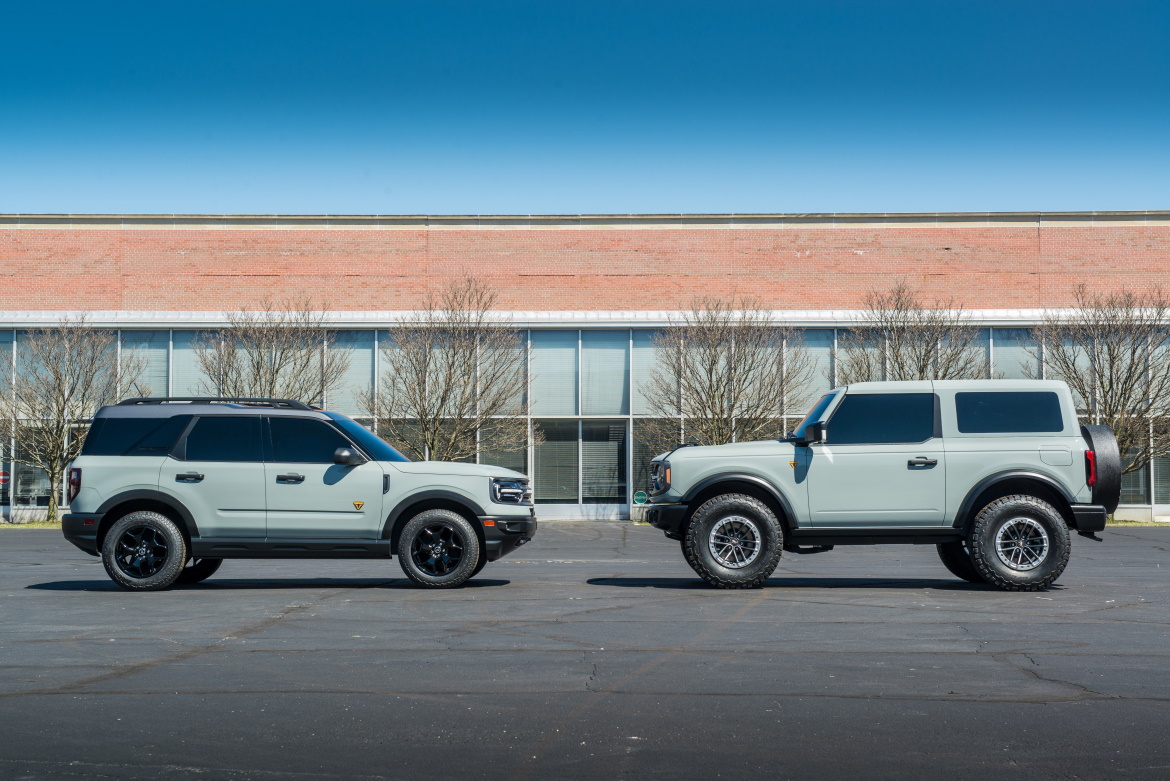A three-pronged relaunch of a 1960s icon. The Ford Bronco is re-born in its sixth generation, 24 years after the end of the fifth, and is purposefully inspired by the first, 1966 model that is now one of the classic and most sought-after off-roads. A four-door version is being added to the typical two-door version of previous generations for the first time: both have clear ambitions characterised by more extreme adventure in the wide American spaces. But there is also a less extreme Bronco, the Sport, which may also touch European shores in the future.
Three cars, one personality
“Three cars”, Paul Wraith affirms, “which are devised, designed, and constructed for adventure, with a very clear DNA that prioritises function over fashion”. In terms of design, Wraith was responsible for the re-birth of the Bronco, assisted on the exteriors by Dong Park, who was also at the head of the Sport project. Wraith explains: “The three cars needed to have the look of a Bronco and to function like a Bronco”.
Graphics and architecture
So let’s ask ourselves: what is the essence of a Bronco? There is a set of graphics and architecture: a nose dominated by a single-piece grille divided in two parts by a bar with the name; a separate mudguard; a vertical windscreen to improve visibility; flat sides with a single line of rigidity; pointed front mudguards so that you can see the car’s extremities better; a different coloured roof; simple, single-piece tail lights”.
Tyres up to 35 inches
In reality, we should talk about two Broncos: the 2-door and the 4-door on the one hand (4.41 and 4.81 metres long respectively); and, on the other hand, the Sport (4.39 metres), which was created on the Escape platform. In contrast, the first two have the classic structure with an extreme off-road steel frame. “Built wild”, according to Ford’s intentions: constructed for rugged places. And the word “function” predominates: beginning with the tyres that can be 35-inches, the modular approach guaranteed by 200 optional accessories, the front video camera for showing the ground hidden by the bonnet.
Moisture-proof seats
“To decide on the proportions”, Wraith remembers, “we had to return to the original Bronco. Literally. We took the one that was jealously preserved by Moray Callum, head of design for Ford, and we scanned it in 3D”. Inspiration was taken from the first generation for the interiors too, with the horizontal dashboard. The floors are made of rubber, being water- and mud-proof – some models (there are six versions) even have drain valves – while the marine grade seats are mould- and humidity-resistant. The opening of the tailgate offers a social space; the roof can house a tent. Truly a big adventure. And the Sport is nothing less.
Bronco Sport, SUV with muscle
“Its users”, Dong Park explains, “wanted an SUV with muscle”. Scott Anderson worked on its interiors: “A compact package”, he says, “with the Bronco DNA, but characterised by a front comfort zone and a more functional one at the back that can even house two mountain bikes well anchored”. Always adventure, but of a different type.
(Full article in A&D no. 244)

